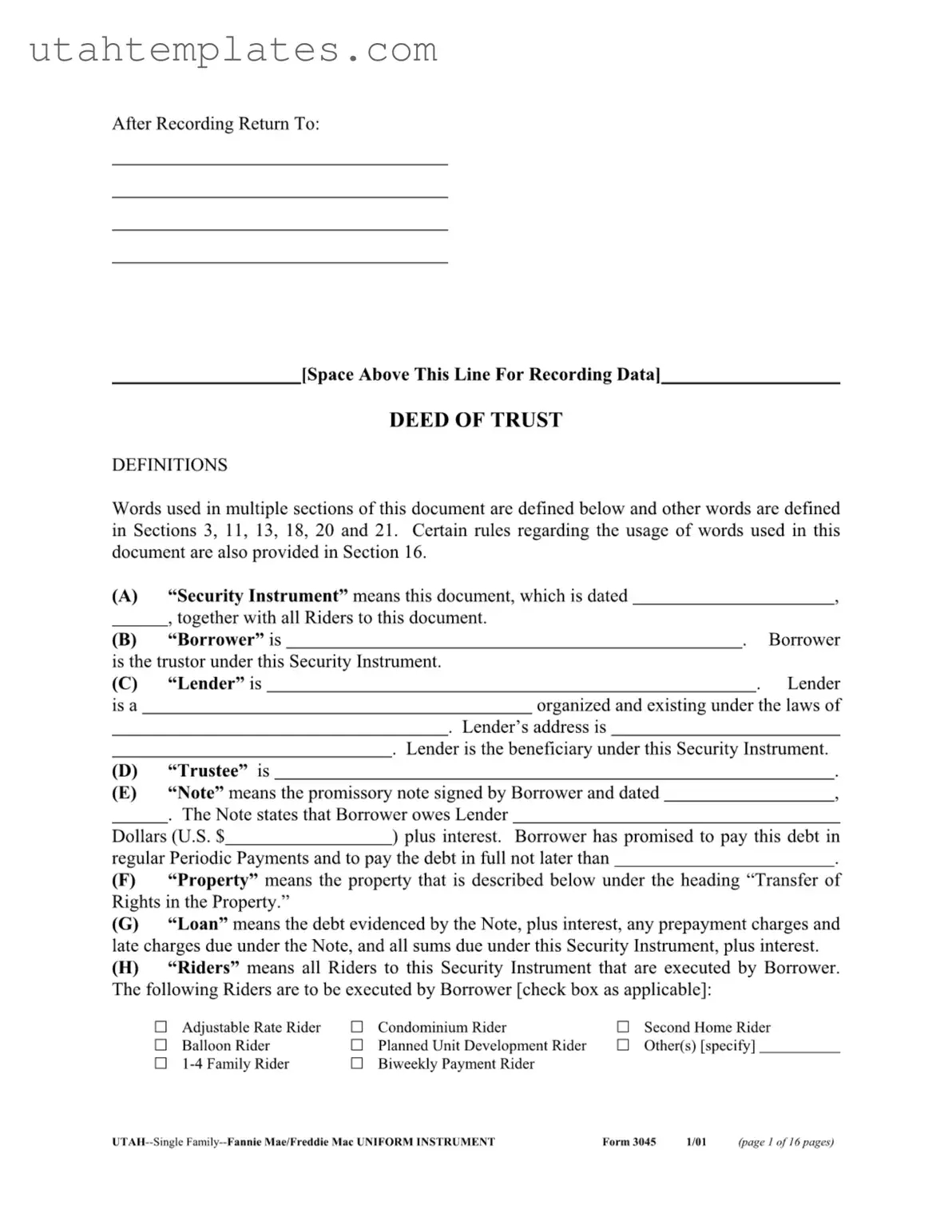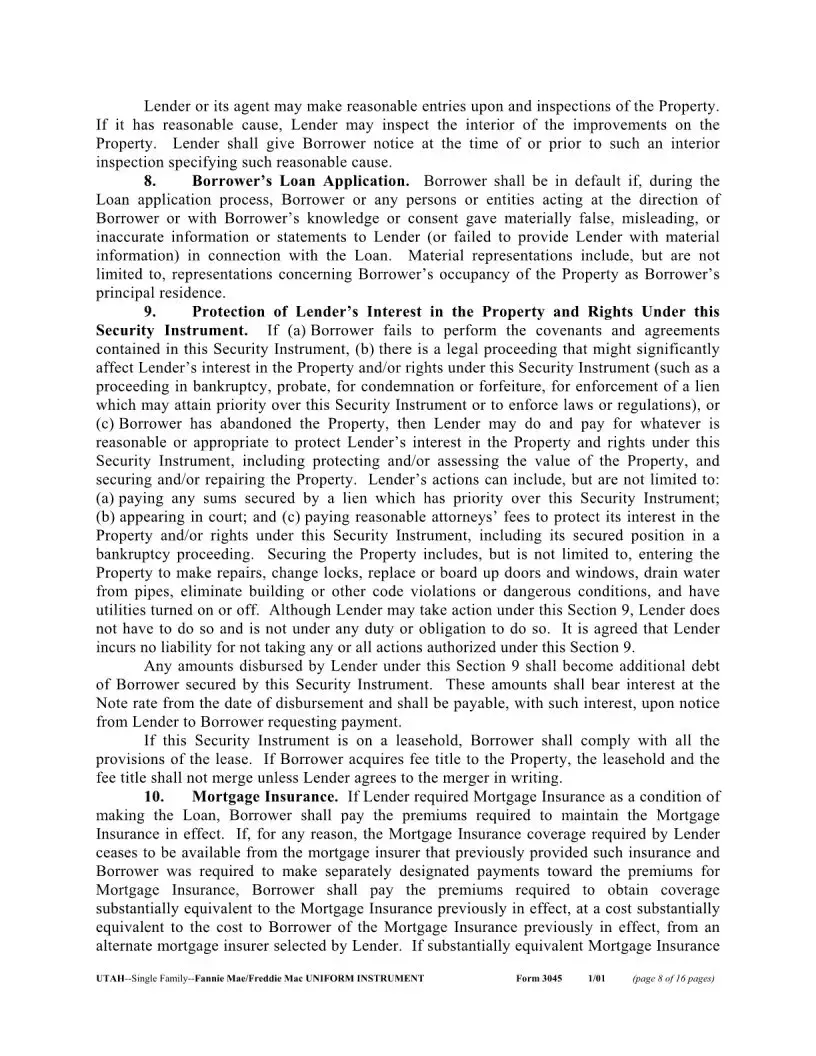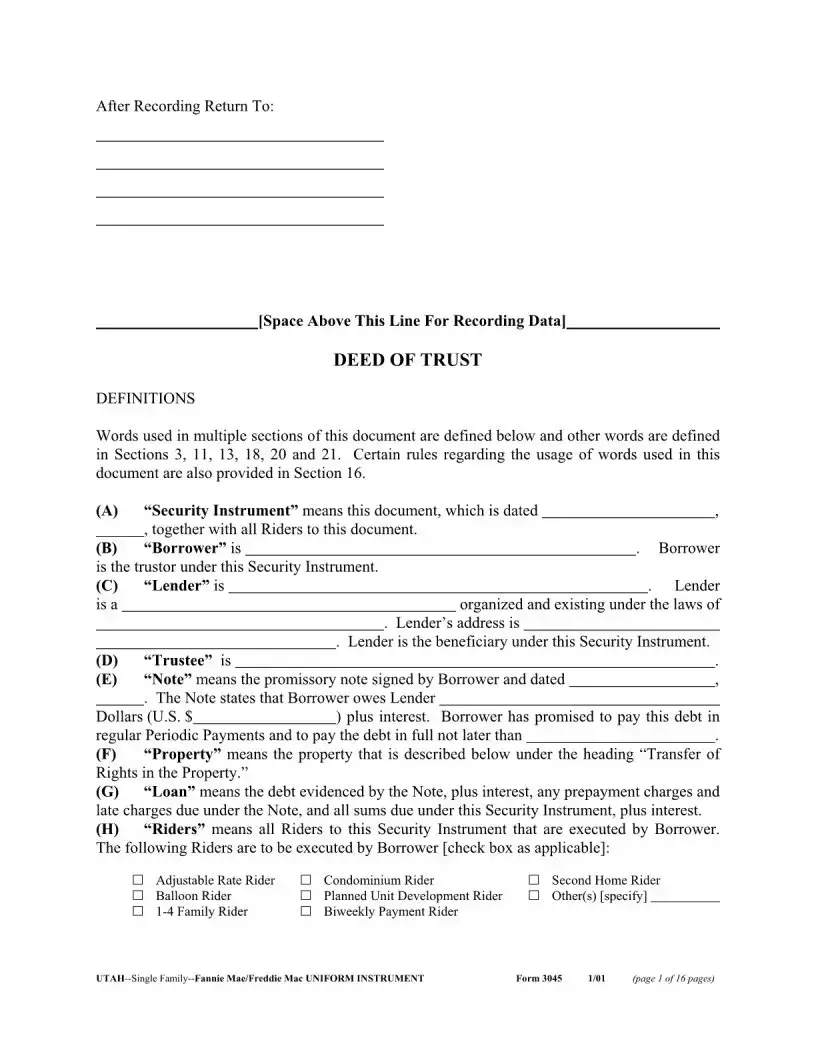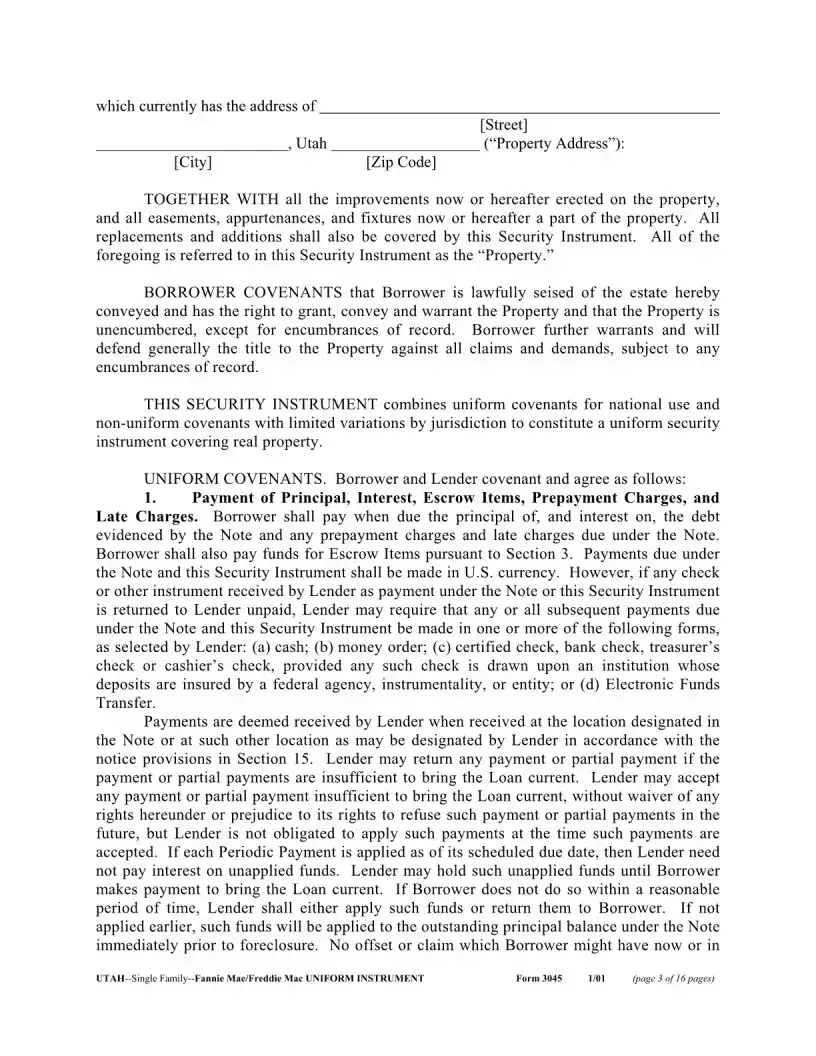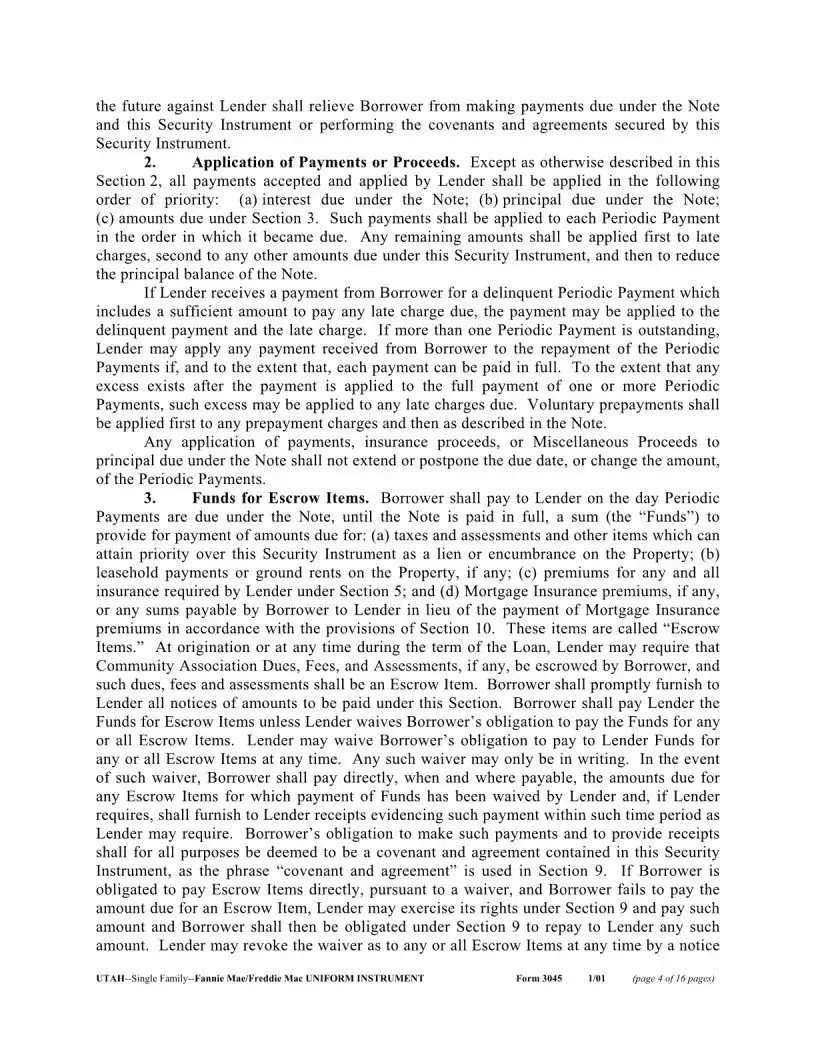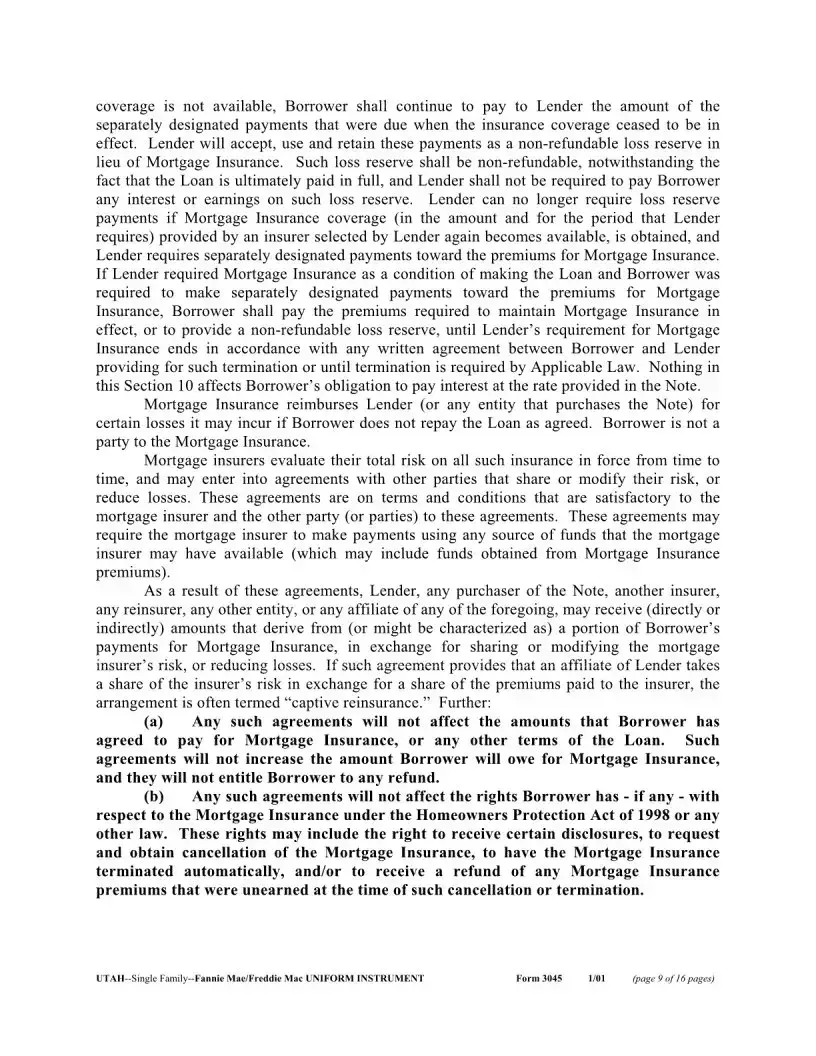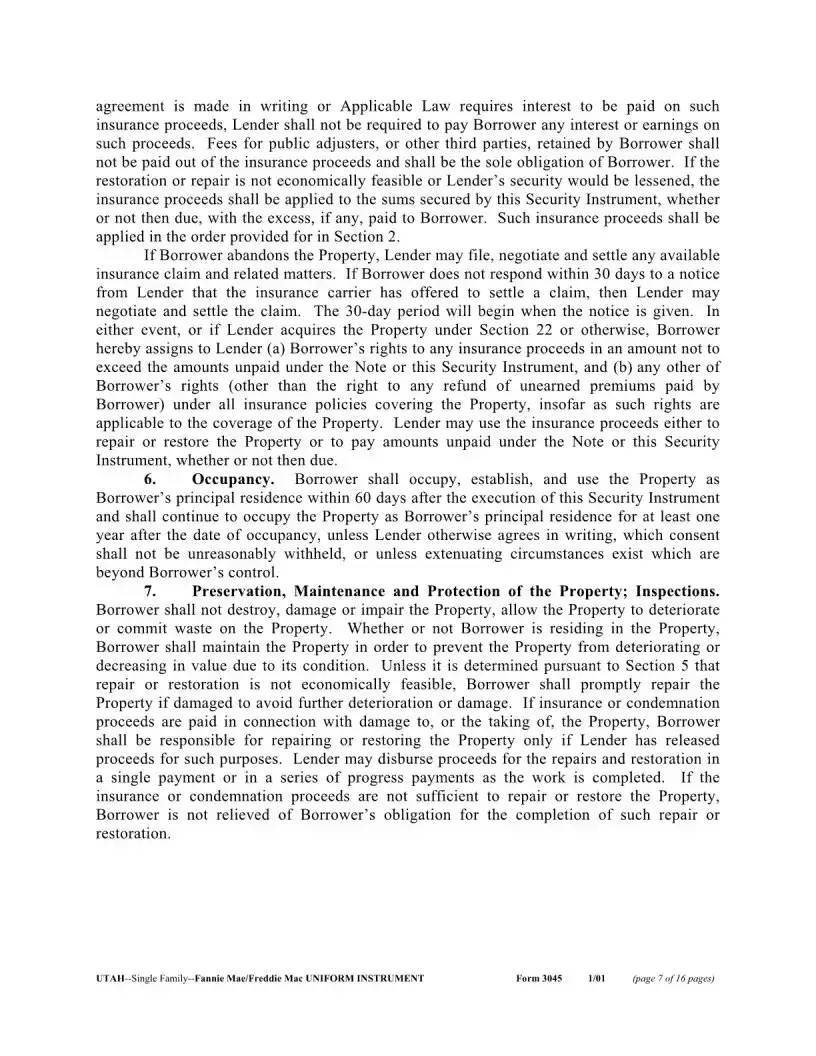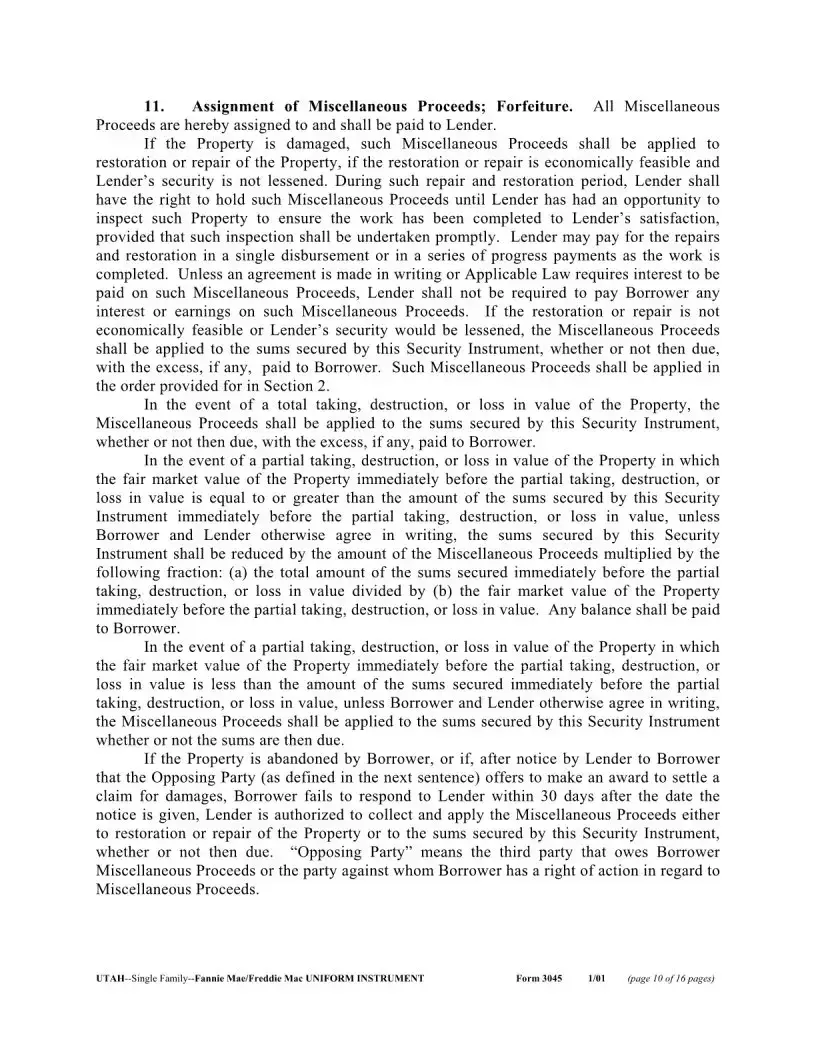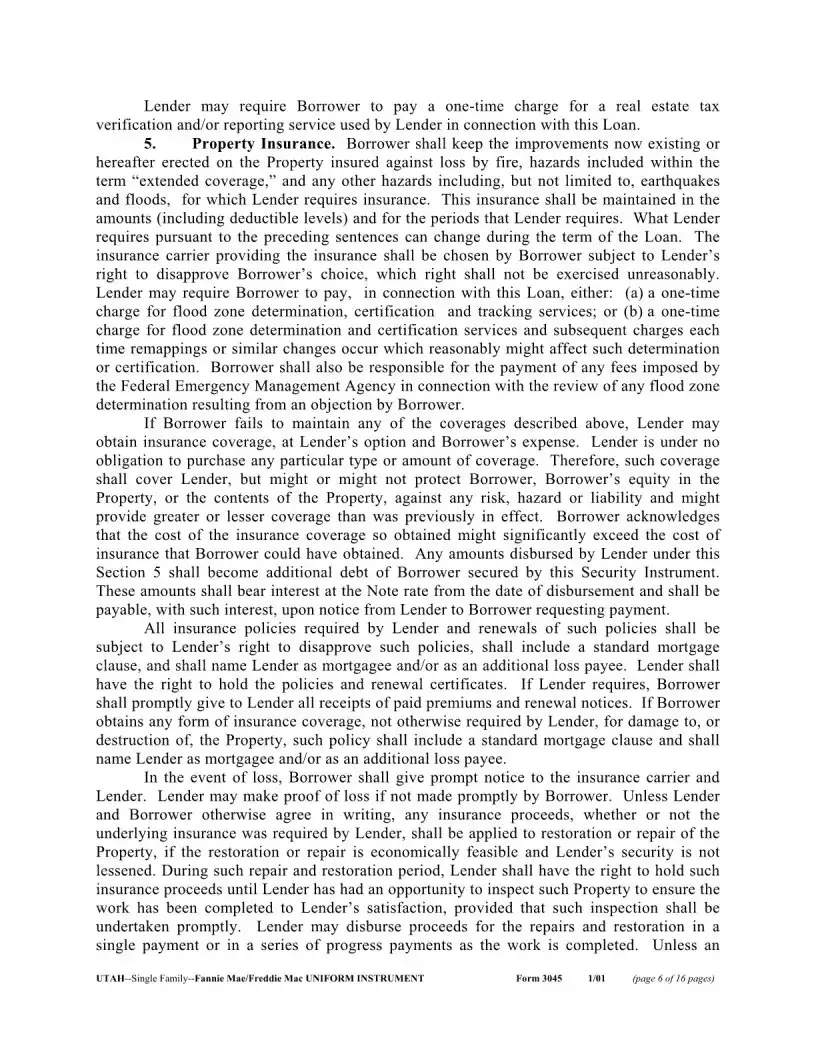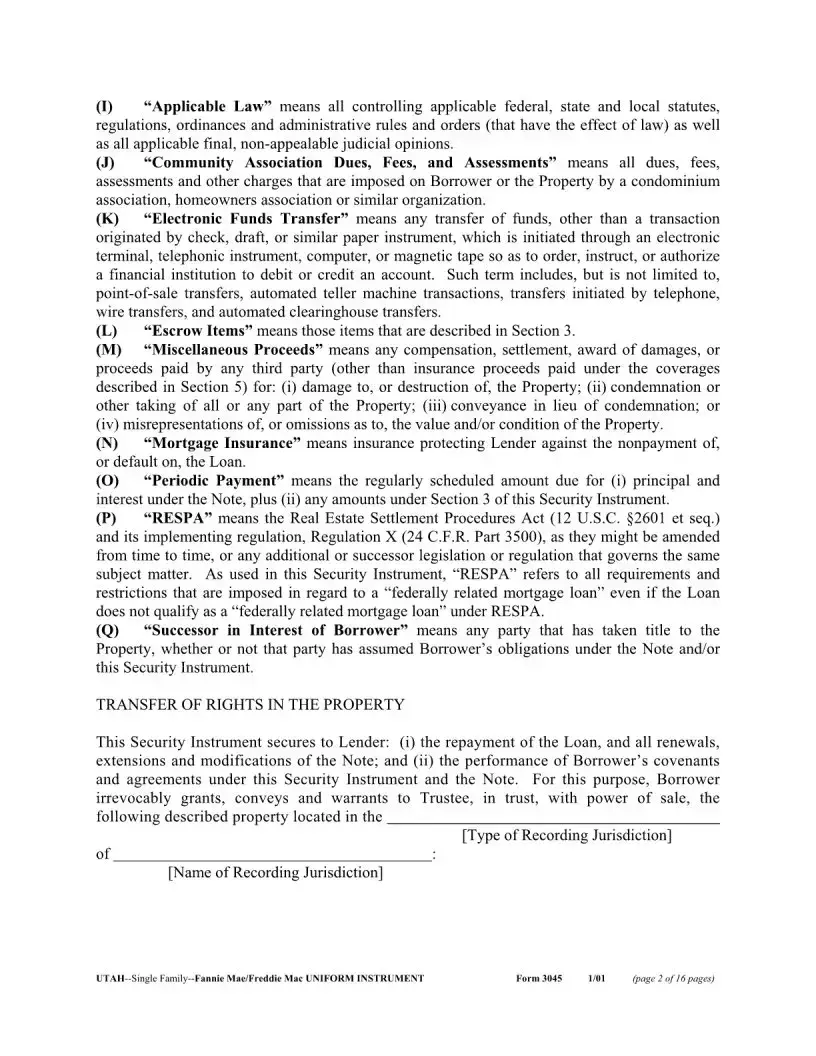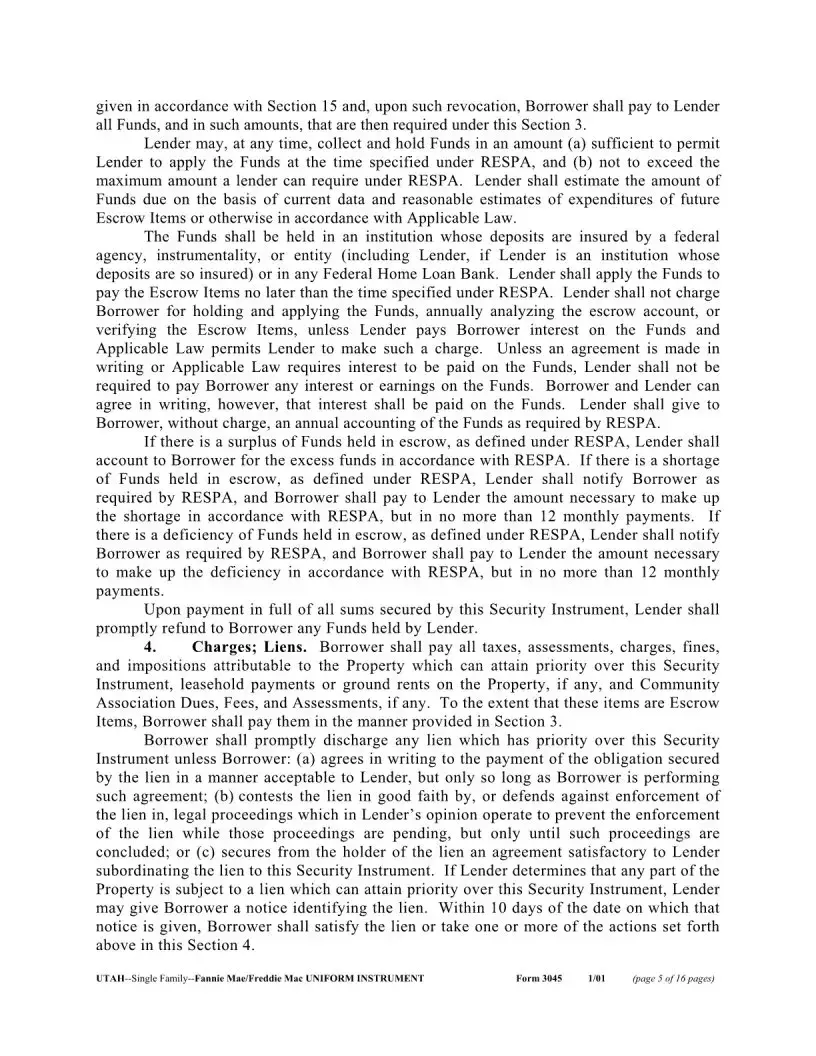When filling out the Utah 3045 form, individuals often make several common mistakes that can lead to delays or complications in the processing of their documents. One frequent error is failing to complete all required fields. Each section of the form has specific information that must be provided. Omitting details, such as the names of the borrower or lender, can result in the form being rejected.
Another mistake is not providing accurate addresses. The form requires the complete address of the property, including the street, city, and zip code. Inaccuracies in this information can create confusion and may hinder the legal validity of the document.
Additionally, people sometimes neglect to date the document properly. The date is crucial as it establishes the timeline for the transaction. Without a date, the form may be considered incomplete, which can lead to further complications.
Some individuals also fail to check the appropriate boxes for the riders that apply to their situation. The form includes options for various riders, and not indicating which ones are relevant can create ambiguity about the terms of the agreement.
Another common error involves the signatures. Both the borrower and the lender must sign the document. If one party's signature is missing, the form may be deemed invalid. It is important to ensure that all required signatures are present before submission.
Inaccurate financial information is another frequent issue. Borrowers must ensure that the amounts listed in the “Note” section accurately reflect the loan amount and any associated interest. Errors in financial details can lead to disputes later on.
People often overlook the importance of reviewing the definitions section. Understanding terms such as “Trustee” and “Property” is essential for accurately completing the form. Misinterpretations can lead to incorrect entries in the relevant sections.
Some individuals may also fail to provide the correct legal description of the property. The form requires a detailed description, and inaccuracies can complicate the transfer of rights in the property.
Lastly, individuals sometimes submit the form without consulting legal professionals. While it is possible to fill out the form independently, seeking legal advice can help prevent errors and ensure compliance with local laws and regulations.
